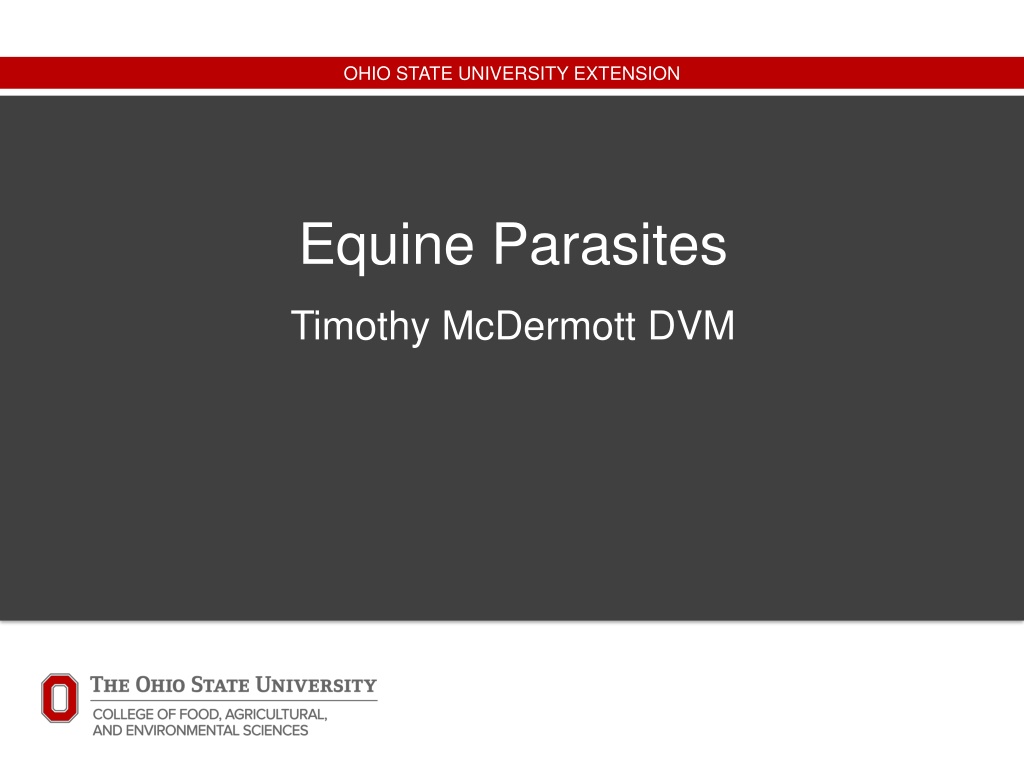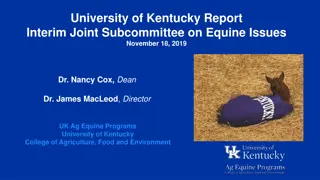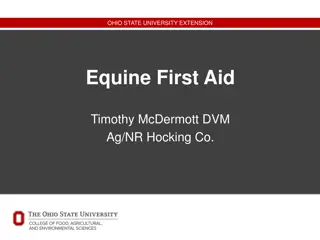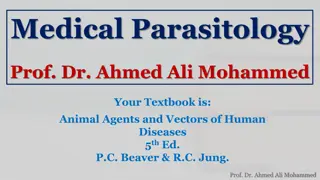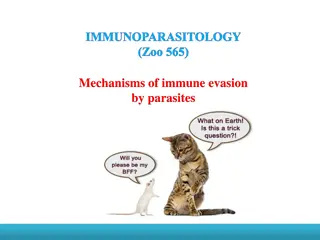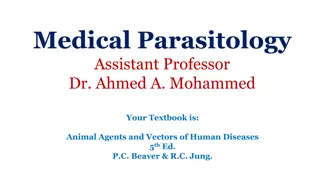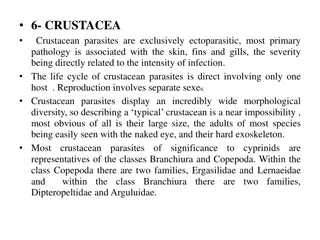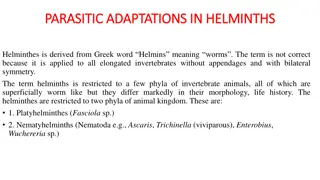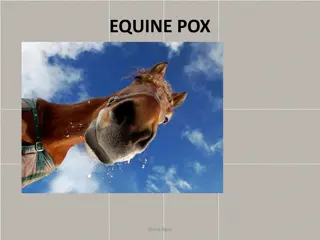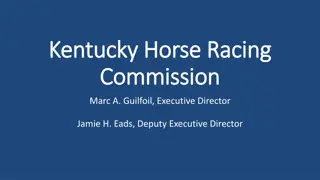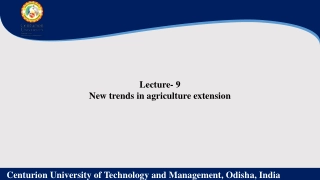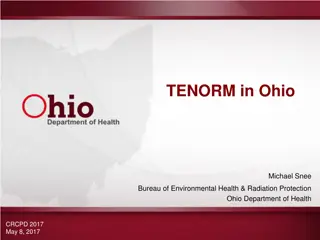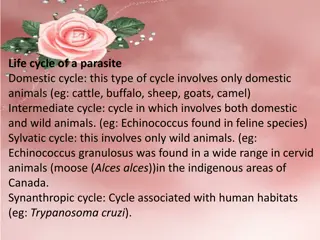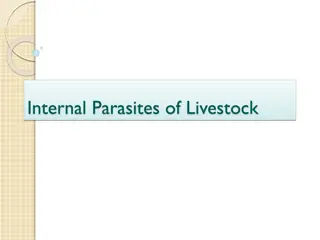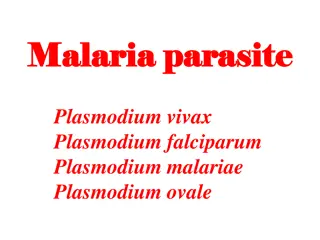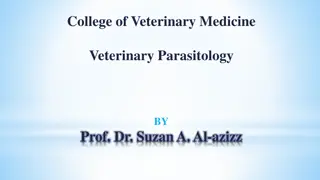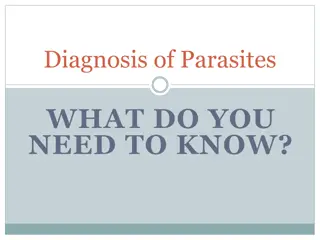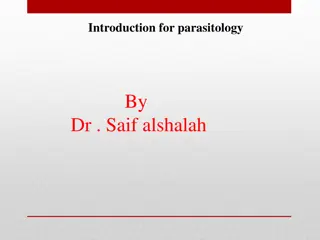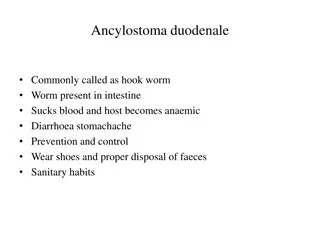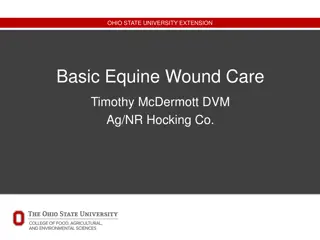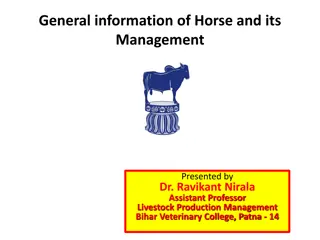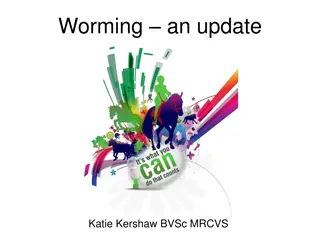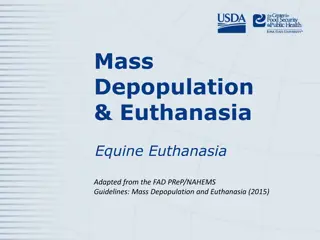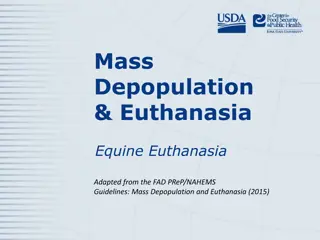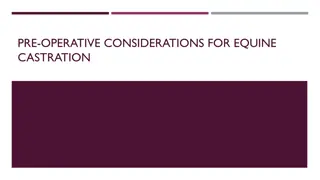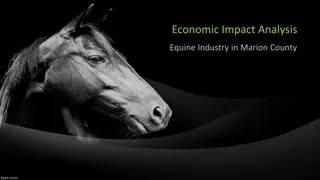Understanding Equine Parasites: A Comprehensive Guide by Ohio State University Extension
Explore the intricate world of equine parasites with a detailed guide provided by Ohio State University Extension. Learn about internal and external parasites, common signs of infestation, fecal testing techniques, and specific types like strongyles and roundworms. Discover the importance of proper treatment and prevention strategies to ensure your horse's health and well-being.
Download Presentation

Please find below an Image/Link to download the presentation.
The content on the website is provided AS IS for your information and personal use only. It may not be sold, licensed, or shared on other websites without obtaining consent from the author. Download presentation by click this link. If you encounter any issues during the download, it is possible that the publisher has removed the file from their server.
E N D
Presentation Transcript
OHIO STATE UNIVERSITY EXTENSION Equine Parasites Timothy McDermott DVM
OHIO STATE UNIVERSITY EXTENSION Parasite Types Internal External Bots(kind of both) 2
OHIO STATE UNIVERSITY EXTENSION Common Signs of Internal Parasites Contrary to popular belief, horses can have large numbers of internal parasites while still appearing to be relatively healthy. But in some individuals, especially young horses, parasites can take a visible toll. Common signs of parasitism include the following: Dull, rough haircoat Lethargy (decreased energy) or depression Decreased stamina Unthriftiness or loss of condition Slowed growth in young horses Pot belly (especially in young horses) Colic Diarrhea 3
OHIO STATE UNIVERSITY EXTENSION Internal Parasite Types Large Strongyles* Roundworms* Tapeworms* Small Strongyles* Pinworms Bots 4
OHIO STATE UNIVERSITY EXTENSION Fecal Testing Basic Float Specific Gravity Distilled water = 1.00 Parasite Egg = 1.02 Fecal solution = 1.025 to 1.03 Fecal Egg Counts Special type of slide to measure parasite burden 5
OHIO STATE UNIVERSITY EXTENSION Fecal Testing 1. Need fresh sample, < 24 hrs old 2. Mix with small volume of fecal solution 3. Strain into tube 4. Place coverslip on tube for 5-10 minutes Centrifuge 5. Check slide with microscope at 40X 6. Not negative, is NOS 6
OHIO STATE UNIVERSITY EXTENSION Strongyles The worst of the worms. Largest and most significant of the Equine worms. Large Strongylus Small - Cyathostomes Either can be problem depending on region Very prolific, direct life cycle(no intermediate host) Almost all transmission in pastures Need worming program, work with your Vet Lots of resistance to wormers 7
OHIO STATE UNIVERSITY EXTENSION Strongyle Eggs -hard to ID, can look similar 8
OHIO STATE UNIVERSITY EXTENSION Roundworms Parascaris equorum Foals/Yearlings/Elderly immune system Fairly common Easy to find and treat generally 9
OHIO STATE UNIVERSITY EXTENSION Roundworm Egg Picture credit: proprofs.com 10
OHIO STATE UNIVERSITY EXTENSION Tapeworms Studies show 60-95% of pleasure horses(east of Mississippi) are tapeworm positive on blood testing, but only see eggs in feces 5 - 20% of time. (Midwest = highest) Easier to see with eye instead of scope Shed segments, not eggs Intermediate host = forage mite Can be subclinical, do not see any problems Highest in October, highest in younger/older horses Immune response? 11
OHIO STATE UNIVERSITY EXTENSION Tapeworm Egg Picture credit: vetagro-sup.fr 12
OHIO STATE UNIVERSITY EXTENSION Picture credit: vetagro-sup.fr 13
OHIO STATE UNIVERSITY EXTENSION Other Types Bots(Gastrophilus) Pinworms(Oxyuris) Any age affected Anal itching Yellow discharge 14
OHIO STATE UNIVERSITY EXTENSION Dewormers Important part of equine health care Many colic cases associated with parasites Not all wormers treat all parasites Use the right type and strategy, do not overuse as may cause resistance. Develop worming plan with your Vet. Pick up manure, drag fields to decrease burden 15
OHIO STATE UNIVERSITY EXTENSION External Parasite Types Flies Mosquitos Lice Mites Ticks 16
OHIO STATE UNIVERSITY EXTENSION External Parasite symptoms Restlessness Irritable Coat changes Wounds/infection Rubbing, twitching Can transmit many diseases 17
OHIO STATE UNIVERSITY EXTENSION Flies Horse Bot Fly Biting Flies Horse/Deer/Stable Non-biting Flies Black/House 18
OHIO STATE UNIVERSITY EXTENSION Bot Fly Honeybee sized, lay eggs on coat, ingested by horse when they lick them off, develop as eggs in stomach, passed in manure Colic signs Examine coat Frost kills eggs 19
OHIO STATE UNIVERSITY EXTENSION Biting Flies Horse/Deer/Stable Daytime Fliers Vicious Biters(females) Can transmit disease Moist areas/near water Control Area control repellants http://edis.ifas.ufl.edu/LyraEDISServlet?command=getThumbnailImageoid=13778507 http://edis.ifas.ufl.edu/LyraEDISServlet?command=getThumbnailImageoid=7175587 20
OHIO STATE UNIVERSITY EXTENSION Other Fly types Black/Horn Flies Smaller types Associated with cattle, other species Blood feeders Non-biting flies House fly Annoy, spread disease, Manage manure 21
OHIO STATE UNIVERSITY EXTENSION http://edis.ifas.ufl.edu/LyraEDISServlet?command=getThumbnailImageoid=475937 http://edis.ifas.ufl.edu/LyraEDISServlet?command=getThumbnailImageoid=3399444 Lice biting and sucking Species specific Ticks Similar to people Mosquitos Virus spread!!! Mites Itch Demodex Chiggers http://edis.ifas.ufl.edu/LyraEDISServlet?command=getThumbnailImageoid=7268532 http://edis.ifas.ufl.edu/LyraEDISServlet?command=getThumbnailImageoid=10823383 http://edis.ifas.ufl.edu/LyraEDISServlet?command=getThumbnailImageoid=16481587 22
OHIO STATE UNIVERSITY EXTENSION External Parasite Control Manure management Eliminate standing water Control brush/weed areas Stable during peak times(bright sun) Biological control Repellants/traps Examine your horse thoroughly 23
OHIO STATE UNIVERSITY EXTENSION ? s Pic credits for External Parasite, University of Florida 24
